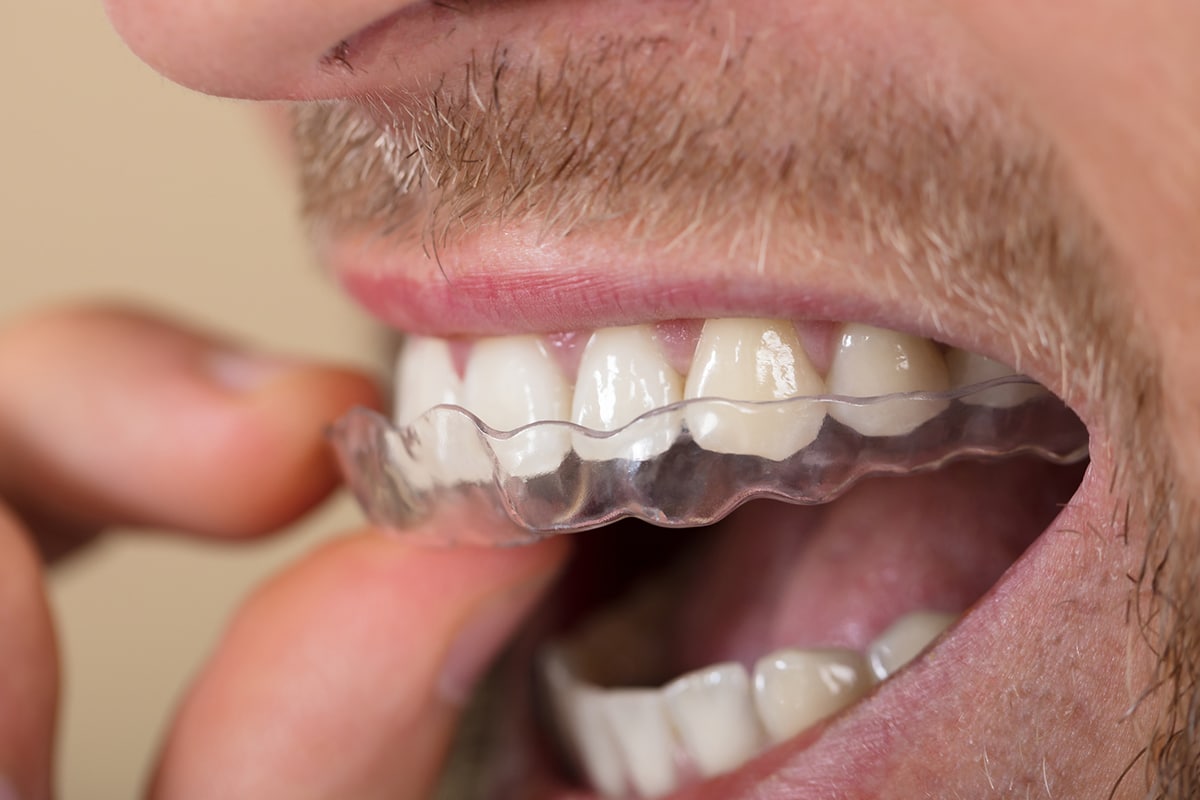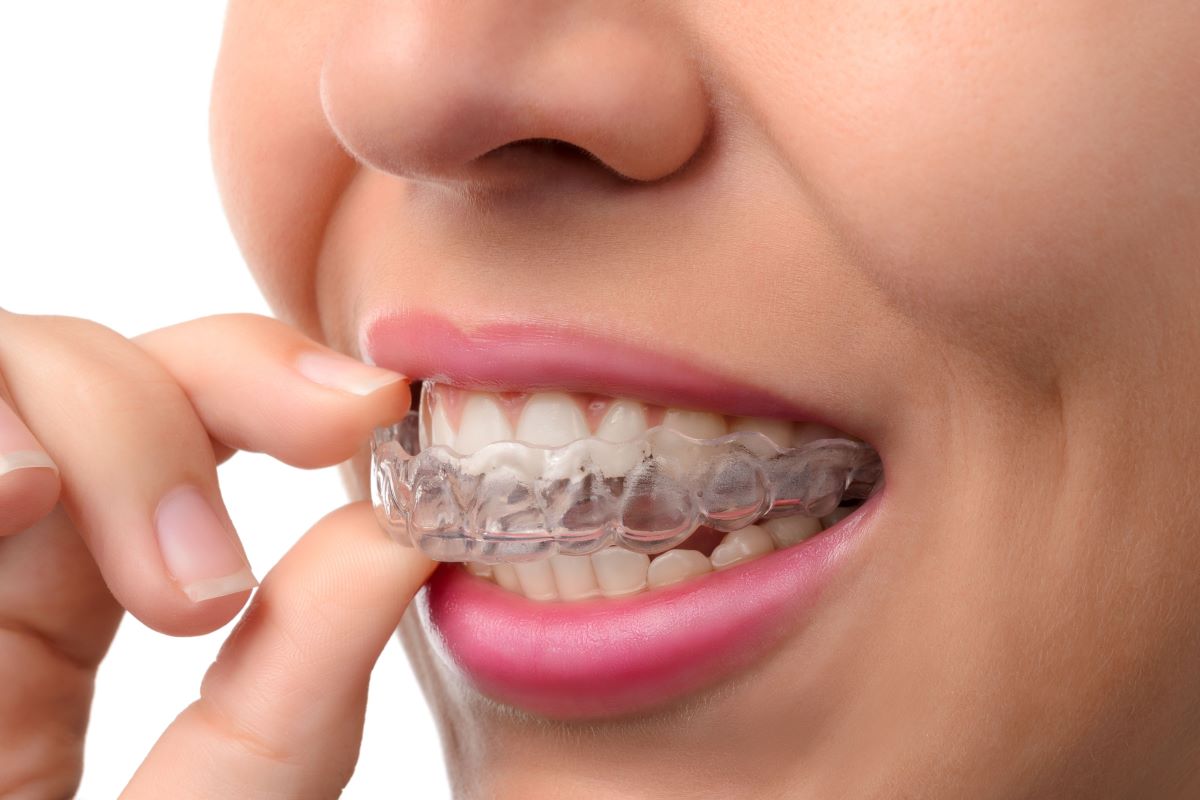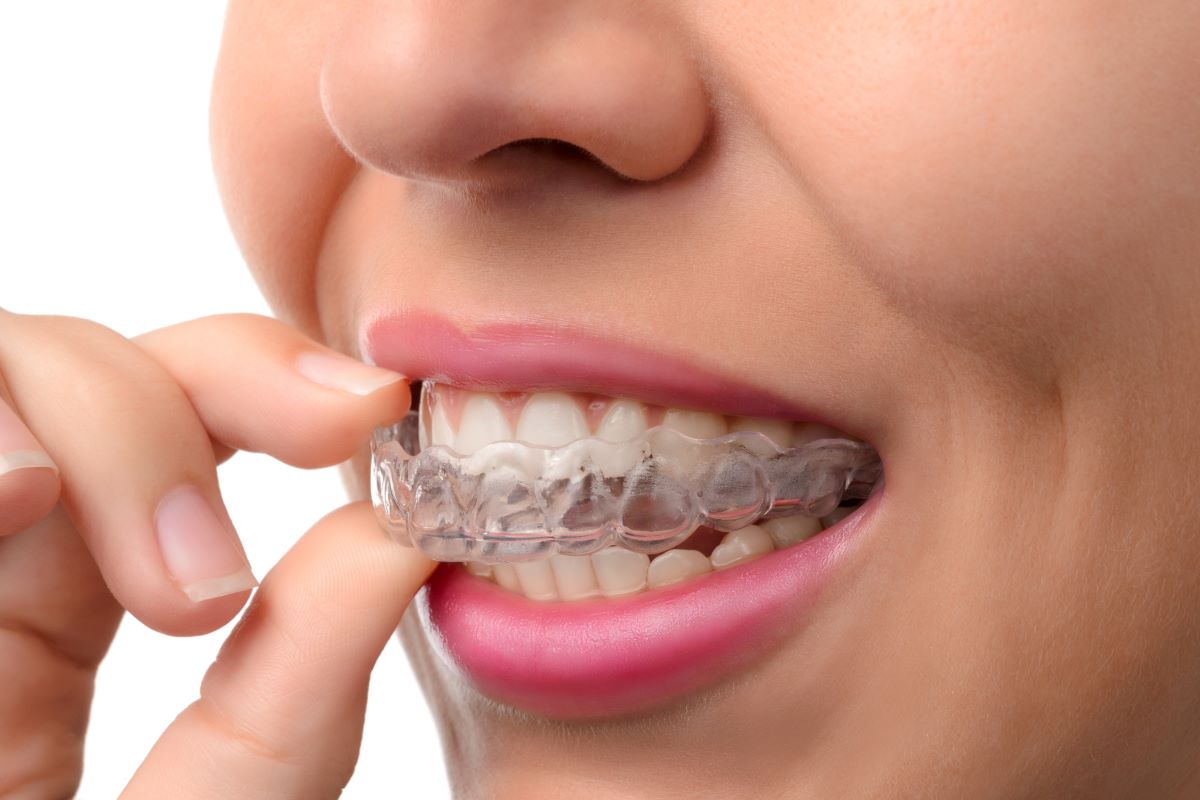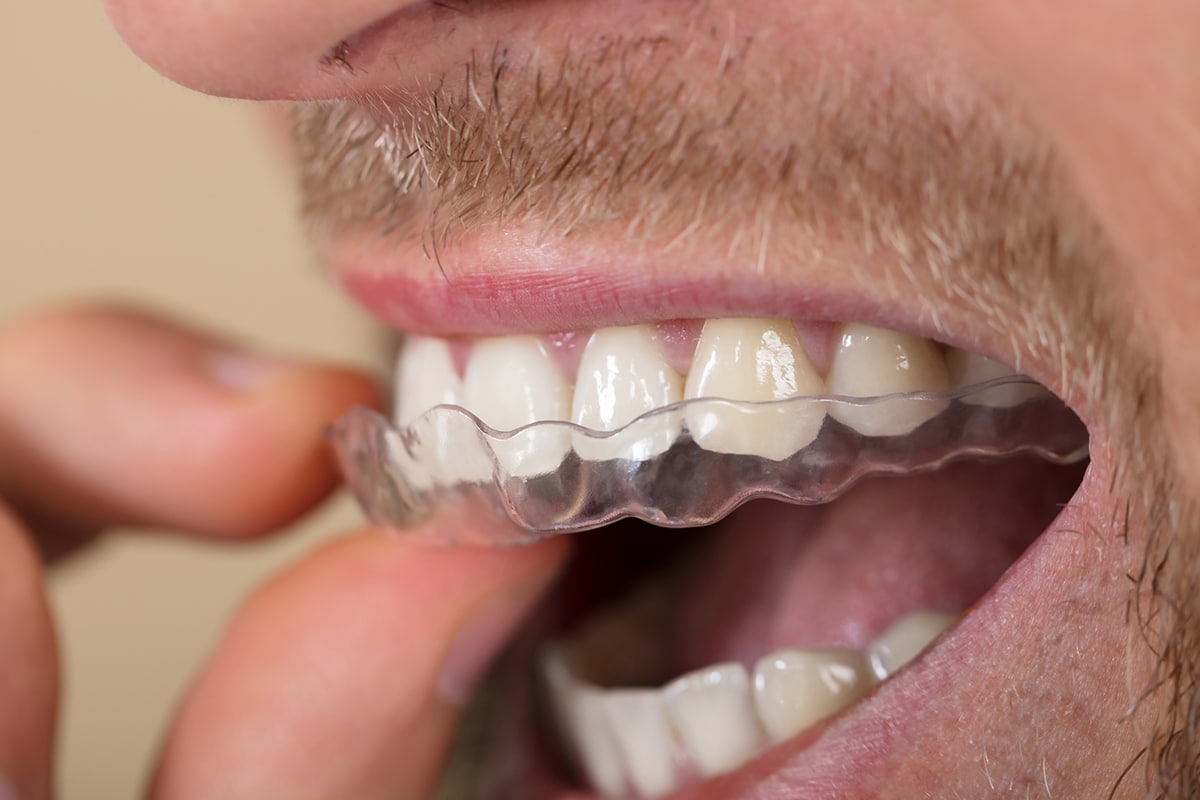

Finance
How Much Does Insurance Cover For Invisalign?
Published: November 10, 2023
Discover how much of the cost of Invisalign treatment insurance covers. Learn about financing options to help with your orthodontic expenses.
(Many of the links in this article redirect to a specific reviewed product. Your purchase of these products through affiliate links helps to generate commission for LiveWell, at no extra cost. Learn more)
Table of Contents
- Introduction
- Understanding Invisalign
- Importance of Insurance Coverage for Invisalign
- Factors Affecting Insurance Coverage
- Types of Insurance Plans for Invisalign
- Average Insurance Coverage for Invisalign
- How to Maximize Insurance Coverage for Invisalign
- Tips for Navigating Insurance Claims for Invisalign
- Common Misconceptions about Insurance Coverage for Invisalign
- Conclusion
Introduction
When it comes to achieving a straight and confident smile, many people turn to Invisalign as a popular alternative to traditional braces. Invisalign offers a discreet and convenient way to straighten teeth without the hassle of metal wires and brackets. However, one pressing question that often arises is, “How much does insurance cover for Invisalign?”
Understanding the intricacies of insurance coverage for Invisalign is crucial in order to make informed financial decisions. Insurance coverage can greatly reduce the out-of-pocket costs associated with Invisalign treatment, making it a more affordable option for many individuals. In this article, we will delve into the details of insurance coverage for Invisalign, discussing the factors that affect coverage, the different types of insurance plans available, and how to maximize your coverage.
Before we dive into the specifics, it’s important to have a clear understanding of what Invisalign is and how it works. Invisalign is a teeth straightening treatment that utilizes a series of clear, custom-made aligners. These aligners are virtually invisible and are worn over the teeth, gradually shifting them into the desired position. The aligners are typically changed every two weeks throughout the course of treatment.
Now that we have a basic understanding of Invisalign, let’s explore why insurance coverage is so important in the context of this treatment. Invisalign can be a significant investment, both in terms of time and money. Insurance coverage can help alleviate the financial burden by covering a portion of the treatment costs. Understanding your insurance coverage can also help you plan and budget accordingly.
Insurance coverage for Invisalign varies depending on several factors, including the type of insurance plan you have and the specific terms and conditions set by your insurance provider. We will explore these factors in more detail later in this article.
Next, we will take a closer look at the different types of insurance plans available that may provide coverage for Invisalign treatment. It’s important to note that not all insurance plans include coverage for orthodontic treatment, so it’s essential to thoroughly review your plan’s coverage details.
Understanding Invisalign
Invisalign has revolutionized the field of orthodontics, offering a more discreet and comfortable alternative to traditional metal braces. Understanding how Invisalign works can give you insights into why it has become such a popular choice for people seeking straighter teeth.
Unlike traditional braces, which use brackets and wires to gradually move teeth, Invisalign utilizes a series of clear, removable aligners. These aligners are made from a smooth, BPA-free plastic material that fits snugly over your teeth, applying gentle yet constant pressure to guide them into the desired position.
One of the key advantages of Invisalign is its discreet nature. The clear aligners are virtually invisible, making them difficult for others to notice. This is particularly appealing to adults who may feel self-conscious about wearing traditional metal braces. Invisalign allows you to confidently go about your daily activities without drawing attention to your orthodontic treatment.
In addition to being discreet, Invisalign aligners offer greater comfort compared to traditional braces. The absence of brackets and wires means there are no sharp edges or protruding components that can irritate your mouth. The aligners are custom-made to fit your teeth precisely, ensuring a snug and comfortable fit.
Another benefit of Invisalign is the convenience it offers. The aligners are removable, allowing you to easily take them out when eating, drinking, brushing, and flossing. This means you can continue to enjoy your favorite foods without any dietary restrictions that may be necessary with traditional braces. The ability to remove the aligners also makes oral hygiene routines more manageable, as you can thoroughly clean your teeth without obstruction.
In terms of treatment duration, the length of Invisalign treatment can vary depending on the individual case. On average, treatment can take anywhere from 6 to 18 months, with regular check-up appointments scheduled every 4 to 6 weeks. During these appointments, your orthodontist will assess your progress and provide you with your next set of aligners.
Invisalign is suitable for a wide range of orthodontic concerns, including overcrowded teeth, gaps between teeth, overbites, underbites, crossbites, and open bites. However, it’s important to note that not all orthodontic issues can be effectively addressed with Invisalign. Your orthodontist will evaluate your specific case and determine if Invisalign is the right treatment option for you.
By understanding the ins and outs of Invisalign, you can make an informed decision about whether it is the right teeth straightening treatment for you. In the following sections, we will explore how insurance coverage can help make Invisalign more affordable and the factors that can affect your coverage.
Importance of Insurance Coverage for Invisalign
Insurance coverage for Invisalign can play a pivotal role in making this orthodontic treatment more accessible and affordable. Understanding the importance of insurance coverage can help you navigate the financial aspect of Invisalign and make an informed decision about your treatment options.
One of the key reasons why insurance coverage is important for Invisalign is the significant cost associated with the treatment. Invisalign treatment typically involves a series of aligners that are custom-made for each patient, as well as regular check-up appointments with the orthodontist. These costs can add up quickly, making it a substantial financial commitment for many individuals.
Insurance coverage helps offset the cost of Invisalign treatment, reducing the out-of-pocket expenses for the patient. The exact amount of coverage varies depending on the insurance plan, but it can make a substantial difference in the overall cost of the treatment.
Moreover, insurance coverage for Invisalign can help individuals plan and budget for their treatment. By knowing the extent of their coverage, patients can anticipate their financial responsibilities and make appropriate arrangements. This allows for better financial planning and reduces the risk of unexpected expenses.
Insurance coverage also provides peace of mind for individuals undergoing Invisalign treatment. Knowing that a portion of the treatment cost is covered can alleviate the financial stress and make the process more manageable.
Additionally, insurance coverage for Invisalign can help individuals access the treatment they need without excessive delay. Without insurance, individuals may have to delay or forgo the treatment due to the high costs involved. Insurance coverage can facilitate timely access to Invisalign, allowing individuals to start their treatment without unnecessary delays.
It’s important to note that not all insurance plans include coverage for orthodontic treatment, and those that do may have certain limitations and restrictions. Some insurance plans may have waiting periods before coverage kicks in, while others may have specific criteria for eligibility. Understanding the specifics of your insurance coverage is crucial in determining your financial responsibilities and maximizing your benefits.
In the following sections, we will explore the factors that can affect insurance coverage for Invisalign and the different types of insurance plans that may include coverage for this orthodontic treatment.
Factors Affecting Insurance Coverage
Insurance coverage for Invisalign can vary depending on several factors. Understanding these factors can help you navigate the complexities of insurance coverage and determine the extent of your benefits.
One of the primary factors that can affect insurance coverage for Invisalign is the specific insurance plan you have. Different insurance providers offer various types of plans, each with its own set of coverage options and limitations. Some insurance plans may include coverage for orthodontic treatment, while others may not. It’s important to review the details of your insurance plan to determine if Invisalign is covered.
Another factor that can influence insurance coverage is the terms and conditions set by your insurance provider. Even if your insurance plan includes coverage for orthodontic treatment, there may be specific requirements or limitations. For example, your insurance provider may require a specific age range for coverage, or they may require pre-authorization before starting Invisalign treatment. Familiarize yourself with these requirements to ensure you meet the necessary criteria for coverage.
The extent of coverage for Invisalign can also vary depending on the severity of your orthodontic case. Insurance providers may have different criteria for determining eligibility and coverage amounts based on the complexity of the treatment required. More severe cases may be eligible for higher coverage amounts, while less severe cases may have reduced coverage.
It’s important to note that insurance coverage for Invisalign may have annual maximums or caps on orthodontic treatment. This means that your insurance provider may only cover up to a certain amount per year for orthodontic treatment, including Invisalign. If the cost of your Invisalign treatment exceeds this maximum, you may be responsible for covering the remaining expenses.
Additionally, some insurance plans may require you to meet a deductible before coverage begins. A deductible is a set amount that you must pay out-of-pocket before your insurance benefits apply. Familiarize yourself with the deductible requirements of your insurance plan to understand your financial responsibility.
It’s important to review your insurance coverage documents or speak with a representative from your insurance provider to understand the specific factors that may affect your coverage for Invisalign. By knowing these factors, you can better manage your expectations and plan accordingly.
In the following sections, we will explore the different types of insurance plans that may include coverage for Invisalign and provide insights on how to maximize your insurance coverage.
Types of Insurance Plans for Invisalign
When it comes to insurance coverage for Invisalign, the type of insurance plan you have can play a crucial role in determining the extent of coverage. Different insurance plans offer varying levels of coverage for orthodontic treatments, including Invisalign. Understanding the different types of insurance plans available can help you gauge your potential benefits.
1. Employer-Sponsored Dental Insurance: Many individuals receive dental insurance coverage as part of their employee benefits package. These employer-sponsored plans often include coverage for orthodontic treatment, which may include Invisalign. The extent of coverage can vary, so it’s essential to review your plan documents or speak to your human resources representative to understand the specific coverage details.
2. Individual Dental Insurance: Individual dental insurance plans, also known as private dental insurance, can be purchased directly by individuals and families. These plans offer a range of coverage options, including orthodontic treatment. It’s important to note that not all individual dental insurance plans include coverage for orthodontics, so it’s crucial to thoroughly review the plan details before purchasing.
3. Dental Discount Plans: Dental discount plans, also known as dental savings plans, are membership-based programs that provide discounts on various dental treatments, including orthodontic procedures. Unlike traditional insurance plans, dental discount plans do not involve claims or deductibles. Instead, members receive discounted rates from participating dentists. While dental discount plans do not provide coverage in the traditional sense, they can significantly reduce the cost of Invisalign treatment.
4. Medicaid: Medicaid is a government-sponsored program that offers healthcare coverage for eligible individuals with limited income. While dental coverage under Medicaid varies by state, some states may provide coverage for orthodontic treatment, including Invisalign, for certain age groups and specific dental conditions. Eligibility and coverage details can vary, so it’s important to check with your state’s Medicaid office for more information.
It’s important to note that the coverage details and limitations can vary significantly within each type of insurance plan. Plan documents and policies should be thoroughly reviewed to understand the specifics of the coverage for orthodontic treatment, including Invisalign.
In addition to understanding the different types of insurance plans, it’s also crucial to familiarize yourself with the specific terms and conditions of your insurance coverage. This includes any waiting periods, pre-authorization requirements, and annual maximums that may impact your Invisalign coverage.
In the next sections, we will explore the average insurance coverage for Invisalign, as well as provide tips on maximizing your insurance benefits for this orthodontic treatment.
Average Insurance Coverage for Invisalign
The average insurance coverage for Invisalign can vary depending on factors such as the type of insurance plan and the specific terms and conditions set by the insurance provider. While it’s challenging to give an exact figure for the average coverage, understanding some general trends can give you an idea of what to expect.
On average, insurance coverage for Invisalign can range from 25% to 50% of the total treatment cost. This means that insurance may cover a quarter to half of the expenses associated with Invisalign treatment, including the cost of aligners, orthodontic appointments, and any necessary X-rays or scans.
However, it’s important to note that the percentage of coverage can vary significantly among different insurance plans. Some plans may offer higher coverage percentages, while others may offer lower coverage. Additionally, some plans may have annual maximums or caps on orthodontic treatment, which can impact the total amount covered.
It’s also crucial to understand that insurance coverage for Invisalign often applies to the orthodontic portion of the treatment and not the cosmetic aspects. Invisalign can correct both functional and cosmetic issues, but insurance coverage typically focuses on the functional aspect. If there is a significant cosmetic component to the treatment, such as tooth whitening or shaping, it may not be covered by insurance.
It’s important to review your insurance plan documents or speak with a representative from your insurance provider to understand the specific coverage details for Invisalign. This includes finding out the percentage of coverage, any annual maximums, any limitations or waiting periods, and any requirements for pre-authorization or documentation from your orthodontist.
Additionally, keep in mind that insurance coverage can vary not only between different insurance providers but also between different individual plans within the same provider. It’s crucial to thoroughly review your plan’s coverage details to understand the specifics of your benefits.
Understanding the average insurance coverage for Invisalign can give you an idea of the financial assistance you may receive for your treatment. However, it’s important to note that individual coverage may differ based on factors such as your specific insurance plan, orthodontic diagnosis, and other eligibility requirements. Consulting with your insurance provider and orthodontist can provide you with the most accurate information about your coverage.
In the next sections, we will provide tips for maximizing your insurance coverage for Invisalign and navigating the claims process smoothly.
How to Maximize Insurance Coverage for Invisalign
Maximizing your insurance coverage for Invisalign can help reduce your out-of-pocket expenses and make the treatment more affordable. Here are some tips to help you make the most of your insurance benefits:
1. Review your insurance plan: Carefully review your insurance plan documents to understand the details of your coverage for orthodontic treatment, including Invisalign. Take note of any coverage percentages, annual maximums, waiting periods, and other limitations or requirements. Understanding the specifics of your plan will help you navigate the treatment process effectively.
2. Consult with your orthodontist: It’s important to consult with your orthodontist before starting Invisalign treatment. Your orthodontist can provide insights into your specific treatment needs and help you understand how your insurance coverage applies to your case. They can also assist in obtaining any necessary pre-authorization or documentation required by your insurance provider.
3. Timing is key: Consider the timing of your treatment in relation to your insurance coverage. If you anticipate any changes in your insurance plan or coverage, it may be beneficial to start your treatment before those changes take effect. Additionally, some insurance plans have waiting periods before orthodontic treatment coverage kicks in, so plan accordingly.
4. Utilize your flexible spending account (FSA) or health savings account (HSA): If you have a flexible spending account (FSA) or a health savings account (HSA), consider using these funds to cover your Invisalign expenses. These accounts allow you to set aside pre-tax dollars for qualified medical expenses, including orthodontics. Be sure to check the specific guidelines and limitations set by your FSA or HSA provider.
5. Keep accurate records: Maintain detailed records of all your Invisalign-related expenses, including receipts, invoices, and treatment documentation. This will make it easier to submit claims and track your insurance reimbursements. By keeping organized records, you can ensure that you receive the maximum benefit from your insurance coverage.
6. Coordinate with your insurance provider: If you have any questions or concerns about your insurance coverage for Invisalign, don’t hesitate to reach out to your insurance provider. They can provide clarification on coverage details, claims processes, and any other inquiries you may have. By staying informed and communicating with your provider, you can navigate the insurance process more effectively.
Remember, each insurance plan and provider may have different policies and requirements. It’s crucial to familiarize yourself with your specific coverage details and consult with your orthodontist and insurance provider for personalized advice.
In the next section, we will address common misconceptions about insurance coverage for Invisalign and provide clarity on the topic.
Tips for Navigating Insurance Claims for Invisalign
Navigating insurance claims for Invisalign treatment can sometimes be a complex process. However, with some guidance and preparation, you can streamline the claims process and maximize your insurance benefits. Here are some tips to help you navigate insurance claims for Invisalign:
1. Understand your coverage: It’s crucial to thoroughly understand your insurance coverage for Invisalign before starting treatment. Familiarize yourself with the specific terms and conditions, including coverage percentages, deductibles, annual maximums, and any restrictions or waiting periods. This knowledge will allow you to estimate your out-of-pocket expenses accurately.
2. Consult with your orthodontist: Your orthodontist is a valuable resource when it comes to navigating insurance claims. Meet with your orthodontist before starting Invisalign treatment to discuss your insurance coverage and any necessary documentation or pre-authorization required by your insurance provider. Your orthodontist can guide you through the process and provide the necessary information to support your insurance claim.
3. Keep detailed records: Keep thorough records of all Invisalign-related expenses, including invoices, receipts, statements, and treatment documentation. Accurate record-keeping will help you provide the necessary documentation to support your insurance claim. It’s also wise to keep a copy of your insurance plan documents for reference.
4. Submit claims promptly: Submit your insurance claims for Invisalign treatment as soon as possible. Different insurance providers have varying timelines for claim submission, so it’s essential to familiarize yourself with the requirements. By submitting claims promptly, you can expedite the processing and reimbursement process.
5. Follow up with your insurance provider: After submitting your claim, be proactive in following up with your insurance provider. Keep track of the claim’s progress and contact your provider if there are any delays or discrepancies. Maintaining open communication will ensure that your claim is processed efficiently.
6. Appeal if necessary: If your insurance claim for Invisalign is denied or not fully covered, you have the right to appeal the decision. Review the denial or partial payment explanation provided by your insurance provider, gather any additional supporting documentation, and submit an appeal with a clear explanation of why you believe the claim should be approved. Your orthodontist may be able to assist you with the appeals process.
7. Utilize electronic submissions: Many insurance providers offer the option of electronic claim submissions. Utilize this convenient method to submit your Invisalign claims efficiently. Electronic submissions reduce paperwork and can expedite the claims process.
Remember, each insurance provider may have specific guidelines and processes for claim submission. It’s essential to familiarize yourself with the procedures outlined by your insurance provider and consult with them if you have any questions or concerns throughout the claims process.
In the next section, we will address common misconceptions surrounding insurance coverage for Invisalign and provide accurate information to dispel any confusion.
Common Misconceptions about Insurance Coverage for Invisalign
Insurance coverage for Invisalign can sometimes be surrounded by misconceptions that can create confusion or unrealistic expectations. To help you navigate the topic accurately, let’s address some common misconceptions about insurance coverage for Invisalign:
1. Misconception: Invisalign is fully covered by insurance.
Reality: While some insurance plans may include coverage for Invisalign, it’s important to understand that full coverage is not guaranteed. Insurance coverage percentages can vary, and there may be limitations, deductibles, or annual maximums that apply. Review your specific insurance plan details to understand the extent of the coverage.
2. Misconception: Insurance coverage for Invisalign is the same across all insurance plans.
Reality: The coverage for Invisalign can vary greatly between different insurance plans and providers. Some insurance plans may offer higher coverage percentages, while others may provide lower coverage or exclude orthodontic treatment altogether. It’s crucial to review your insurance plan documents or consult with your insurance provider to understand your specific coverage.
3. Misconception: There are no restrictions on insurance coverage for Invisalign.
Reality: Insurance providers often have specific criteria and limitations for coverage of orthodontic treatments, including Invisalign. These criteria may involve age restrictions, pre-authorization requirements, or the severity of the orthodontic issue. Understanding these restrictions and eligibility requirements is essential for determining the extent of your coverage.
4. Misconception: Insurance coverage for Invisalign is purely for cosmetic purposes.
Reality: While Invisalign can enhance the appearance of your teeth, insurance coverage typically focuses on the functional aspects of treatment. Insurance plans may deem Invisalign necessary for correcting orthodontic issues that affect oral health, such as misalignment, overcrowding, or bite problems. Cosmetic enhancements that are not directly related to the functional aspects of treatment may not be covered.
5. Misconception: Insurance coverage for Invisalign applies immediately.
Reality: Some insurance plans have waiting periods before coverage for orthodontic treatment, including Invisalign, becomes active. It’s essential to review your insurance plan and understand any waiting period requirements to determine when you can start your treatment and be eligible for coverage.
It’s important to remember that insurance coverage for Invisalign can vary based on individual insurance providers, differing insurance plans, and specific policy details. To gain accurate information about your coverage, consult with your insurance provider, and review your plan documents carefully.
In the following section, we will conclude the article by summarizing the key points discussed and reaffirming the importance of understanding insurance coverage for Invisalign.
Conclusion
Understanding insurance coverage for Invisalign is crucial for anyone considering this popular orthodontic treatment. Insurance coverage can significantly reduce the financial burden associated with Invisalign and make it a more affordable option for individuals seeking a straighter smile.
In this article, we delved into various aspects of insurance coverage for Invisalign, including the importance of coverage, the factors that can affect coverage, the different types of insurance plans that may cover Invisalign, and tips for maximizing insurance benefits. We also addressed common misconceptions surrounding insurance coverage for Invisalign to provide accurate information and dispel any confusion.
While each insurance plan and provider may have specific guidelines and coverage details, it is crucial to thoroughly review your insurance plan documents and consult with your provider to understand the specifics of your coverage. Being informed about coverage percentages, deductibles, waiting periods, and any limitations or requirements will help you navigate the claims process and make the most of your insurance benefits.
Remember to consult with your orthodontist to understand how your insurance coverage applies to your specific case. They can guide you through the treatment process, provide necessary documentation, and assist you with any insurance-related inquiries.
Invisalign can be a life-changing experience, providing a discreet and comfortable way to achieve a confident smile. With proper understanding of insurance coverage, you can confidently embark on your Invisalign journey, knowing how to navigate the financial aspect and maximize your insurance benefits.
Ultimately, the key takeaway is that insurance coverage for Invisalign is not universal, and it’s important to familiarize yourself with the details of your specific coverage. By doing so, you can make informed decisions, plan accordingly, and ensure a smooth and financially manageable Invisalign treatment process.














